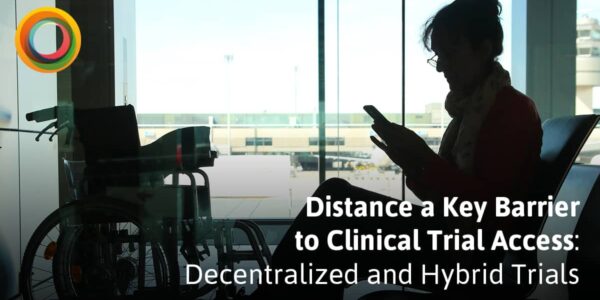
Nearly two years on from the COVID-19 Pandemic, and in that time, the clinical trials landscape has experienced some seismic shifts.
In 2020 alone, active decentralised trials increased by more than 40%, from 912 to 1,293. Although DCTs were not a new phenomenon, their adoption was accelerated by the urgent need to continue trials during the pandemic.
With any industry development comes changes to processes, which require structured guidance on best practices for operating confidently, ethically, and compliantly within new operating frameworks.
The Draft FDA Guidelines for industry, investigators, and other stakeholders were released in May 2023. We’re proud to have joined the industry in feeding back on these draft guidelines, drawing in over 20 years of experience working within clinical trials to ensure remarkable patient experiences and outcomes.
In this blog, we take a deep dive into why we believe new guidelines are critical to the evolution of the clinical trials space and share where we think more guidance is needed.
We must protect the patient to protect the trial
Better patient engagement and retention leads to better clinical outcomes.
Effective trials depend on patients who feel comfortable, confident, and included in their care. As the trials industry evolves, the FDA draft guidelines must be scrutinised and debated to ensure patients are genuine partners in their care rather than subjects of study.
Ultimately, having guidelines that protect the efficacy of the trial must also protect the interests and care of the patient.
Guidelines also serve as a clear stake in the ground, ensuring transparency around what a trial looks and feels like, what can happen during visits, and how patient data is monitored, stored, and shared.
Establishing clear, standardised procedures and practices for DCTs will lead to a better patient experience, as transparency manages expectations, an essential element for trust-building within patient communities.
Roles, Responsibilities, and the Implementation of a DCT
Within the draft guidelines about DCT Design, the roles of each member of the DCT team, who they are, the responsibilities they are undertaking, and how they work with each other have to come under scrutiny.
We believe that additional clarity on the definition of “local HCP” vs. “mobile nurses for at-home visits” would be beneficial within the final FDA guidelines. After the patient, our HCPs are crucial to the success of our trials. Ensuring a universal title, job description, and understanding of their role is key.
From the first draft of the guidelines, we don’t think it’s clear why assessments performed by skilled and experienced local HCPs would be more variable and less precise than those performed by a traditional research site if the training and equipment are consistent between site staff and local HCPs.
We source and train HCPs for remote visits, and our HCPs perform trial procedures “local” to the patient (usually in their home). They receive targeted protocol training and are usually added to the site’s Delegation of Authority (DOA) Log.
They perform clinical assessments and collect data remotely on behalf of the Site/PI but do not make medical decisions about the patient’s care. At the moment, it’s unclear how this type of HCP fits into the definitions in the draft recommendations (e.g., whether they would be classed as a local HCP or trial personnel completing remote visits), so we’ve called for more detail on this.
It also seems that all HCPs who perform protocol procedures should have some protocol training (e.g., adverse event reporting process(es) and any specific blood draw or sample processing requirements). Therefore, including examples of assessments requiring detailed knowledge of the protocol and/or IP would be a good addition to the final guidelines.
Furthermore, it would be helpful to include additional information on where mobile nurses, who receive targeted protocol training and perform similar procedures to research nurses at Sites (including blood draws, vitals, ECGs, and IMP administration), but do not make medical decisions about the patient’s care, fit into these categories.
More clarity would be beneficial regarding how the activities of trial team members should be recorded.
It is clear from the guidance that local HCPs should be on the Task Log. However, it needs to be clarified whether they should be on the Delegation of Authority Log as well. It’s also unclear which documents a mobile nurse should be added to.
Although the benefits of documenting trial personnel have always been clear, we are concerned that the addition of the task log adds to the administrative burden of sites and could be perceived as an additional barrier to the adoption of DCTs – the opposite of the intention of this guidance.
The guidance does mention that the Task Log needs to be signed by the investigator when it’s first created and updated when new local HCPs are added. Still, additional confirmation of whether the investigator must sign when the Task Log is updated would be useful. We think a template or example of the Task Log would support the introduction of this new document if it is to become a feature of the DCT process.
Surely being decentralised means decentralised?
Another element of the draft guidelines we’ve called for clarity on is the requirement to establish a physical location in addition to all of the elements of the trial, where records can be accessed and trial personnel interviewed.
In fully decentralised trials, it may not be practical to have this setting, so we have requested that guidance make allowance for protocols where it’s not practical or cost-effective to have physical records at a physical location.
Drug distribution, packaging, shipping & management
With DCTs, medication is often shipped to the patient’s home, which presents many challenges of its own. These challenges can include:
- An increase in costs
- Potential inconsistency with its storage and stability
- The potential of unauthorised access
- Potential for interruptions to the study should the refill not be received on time
- Increased risk of tampering
- Inconsistent administration of the drug
- Risk of incorrect dosing and over-burdening of the patient and/or caregiver if they are storing IMP and learning how to administer the medicines
To ensure robust guidelines on how medication is distributed, packaged, shipped, and managed within a DCT setting, guidance could include HCPs receiving the IMP shipment and carrying out initial checks in the patient’s home. This would help reduce the risks listed above while reducing the burden on the participant and/or caregiver.
This may allow shipping of IMP to participants where the safety profile, handling, preparation, and administration requirements are inappropriate for the participant/caregiver receiving the IP directly.
In summary, the May FDA draft guidelines were welcomed by an industry looking for clarification and direction. Although there is still much to debate, we’re excited about the ongoing evolution of DCTs and the potential to take the trial to the patient and the patient to the trial, thus offering far more flexibility and choice, which can drastically improve the patient experience and trial outcomes.
Let us keep the conversation going. What do you think about the FDA draft guidelines? Where do we need further clarification?
Share your thoughts on our socials



